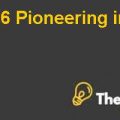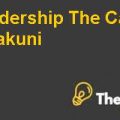
Question 2:
After the announcement of the merger in 1998, there were many problems and obstacles that the new management faced. The major problem that the new management faced was that the attitude of Americans and Germans were causing many conflicts for the management. For instance, the attitude of the Americans at the meeting was very different from the Germans. Americans used to encourage the new ideas, involvement of everyone, group discussions and providing solutions to the problems, whereas, the Germans were quite inflexible in the meetings. They believed in the rules and regulations that were supposed to be followed during the meeting. They were quite disciplined and had command over the topics. Moreover, the Americans were quite relaxed and when less committed to what they offered to or decided to do, on the other hand, Germans were fond of the practice that they used to fulfill the commitments and the time that was supposed to be met.
Another problem that the management was facing was the dominance of the opposing culture over both Americans and Germans. The issue was that the Germans had concerns regarding their heritage that Americans would influence their heritage, as according to their thinking Americans were dominant and they had showed flexibility in many cases in history. Whereas, the Americans had a concern that Daimler was huge in size, its investment was huge, the Germans were quite precise in engineering and hence, they would be having the upper hand with the Americans and also that they had a dominant position after the merger. They were also having concerns that Americans had to face dictatorship culture, of which they were not used to.
One of the main problems that management facing was that the geographical distance between the two countries was huge. Both of the companies were situated in the different continents. Thus, it was creating problems like the time differences. For instance, if Chrysler wanted to contact Daimler it would have been night in Germany which would be an issue for both the companies to get in contact. The major issue that the management faced was that there was a communication gap. The communication gap was resulting in less collaboration and communication between the management from both sides. So, it was resulting in the ignorance of the issues which were creating height or were to be solved as soon as possible and hence, they were being delayed by the management.
Moreover, the communication gap was a headache for the new management. Due to the lack of communication the vision and goal of the merger was not very clear among the management of both the parties. The leaders were unable to convey the objectives and goals of the merger. The situation was created that everyone had no direction and path which they had to follow. The objectives of the merger were blurry and everyone seemed to have no idea what to do. All the employees did not thought out of the box, the problems were increasing, the goals were not properly identified and the aim of the merger was fading away. More importantly, the new management was facing issues like the Germans had concern with the environment of Americans. The Americans believed in the relaxed culture, they used to dress casually and also participated in the free discussions. Whereas, the Germans were well dressed and also believe in the proper corporate culture.
Question 3:
Leadership Approaches
The style of the Germans was very formal and strict. They influenced the formal culture in their companies. The work was done in a way that the expectations from the juniors were very high in Daimler. The junior workers had pressure to perform out of the box for impressing the management at the higher hierarchy level. The workers were pressured and were expected to provide their best in the organization. Whereas, the management emphasized on the workers to take extreme care by not making mistakes while names and titles were concerned.
Chrysler’s approach was the opposite to the approach of Daimler. Very little attention or emphasis was given to the places of hierarchies and the environment was quite informal as compared to Daimler. The management of Chrysler encouraged the informal environment, very comfortable and relaxed environment for working. The middle level managers were also encouraged to take decisions and play their part in the performance of the organization.
Daimler was involved in the practice that the communication was made or favored a top-down, formal style of communication within the company. Daimler had a strict hierarchy and style of decision making. The management of Daimler was involved in taking rational decisions such as firing of employees on the spot..............................
This is just a sample partial case solution. Please place the order on the website to order your own originally done case solution.













